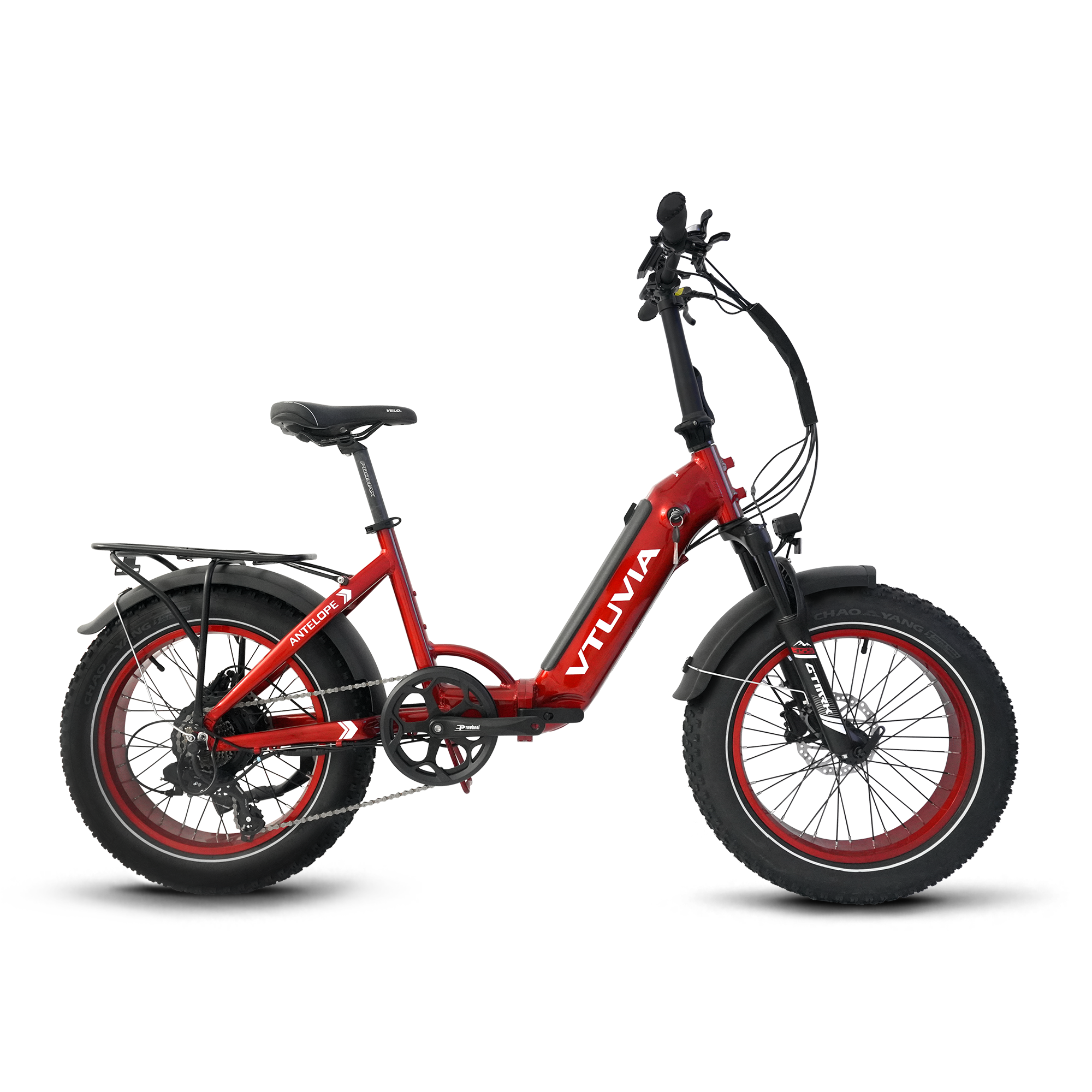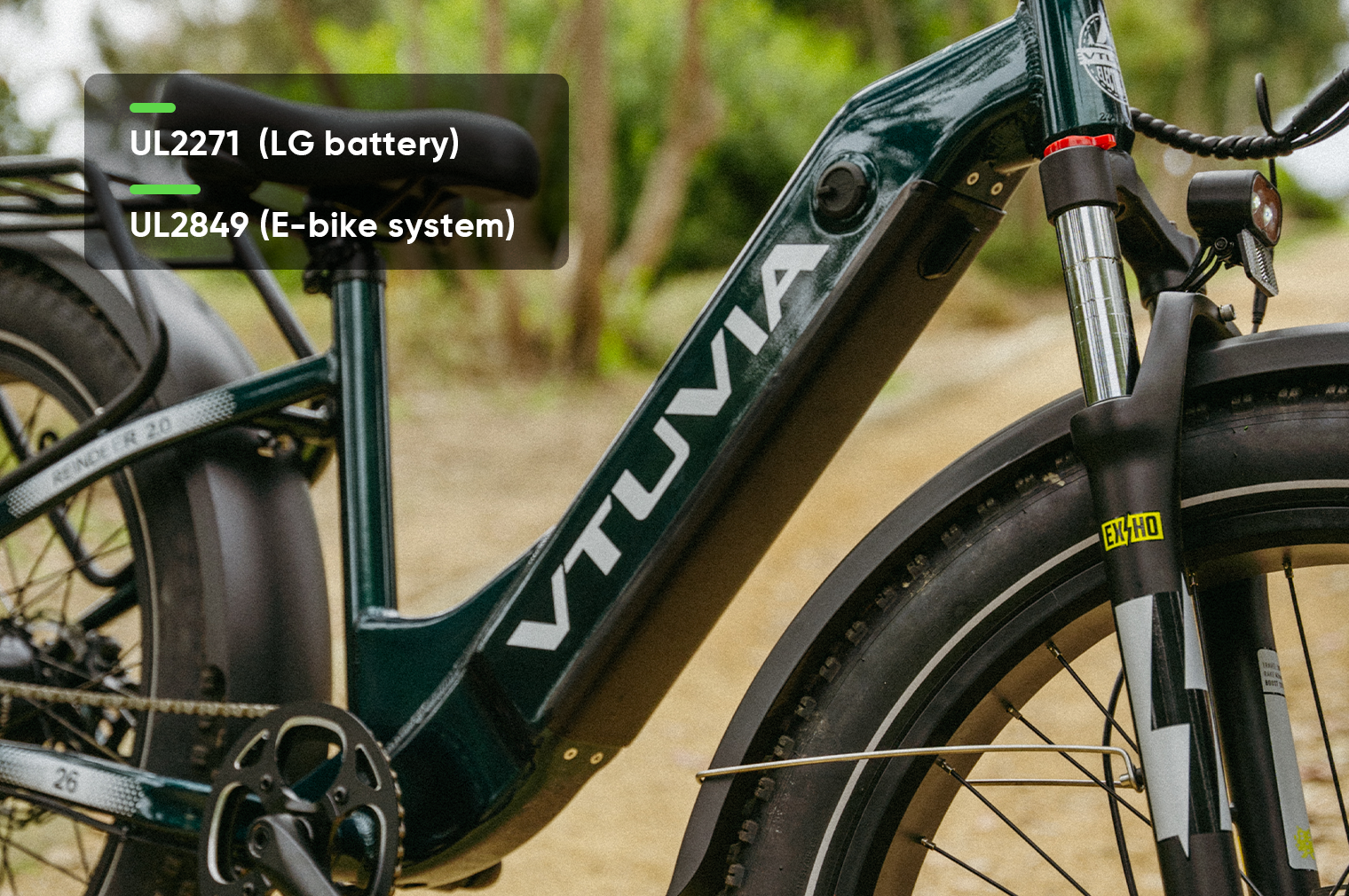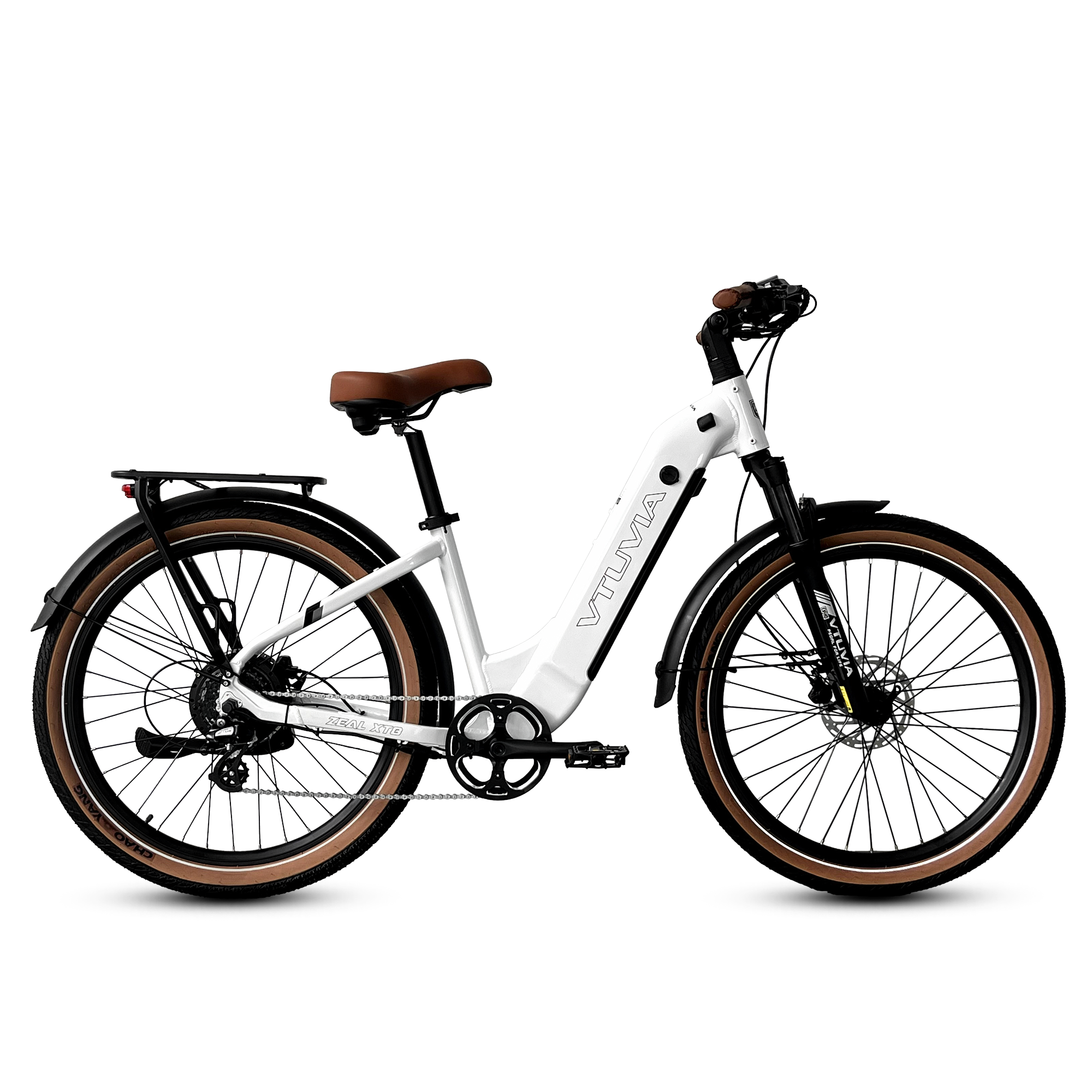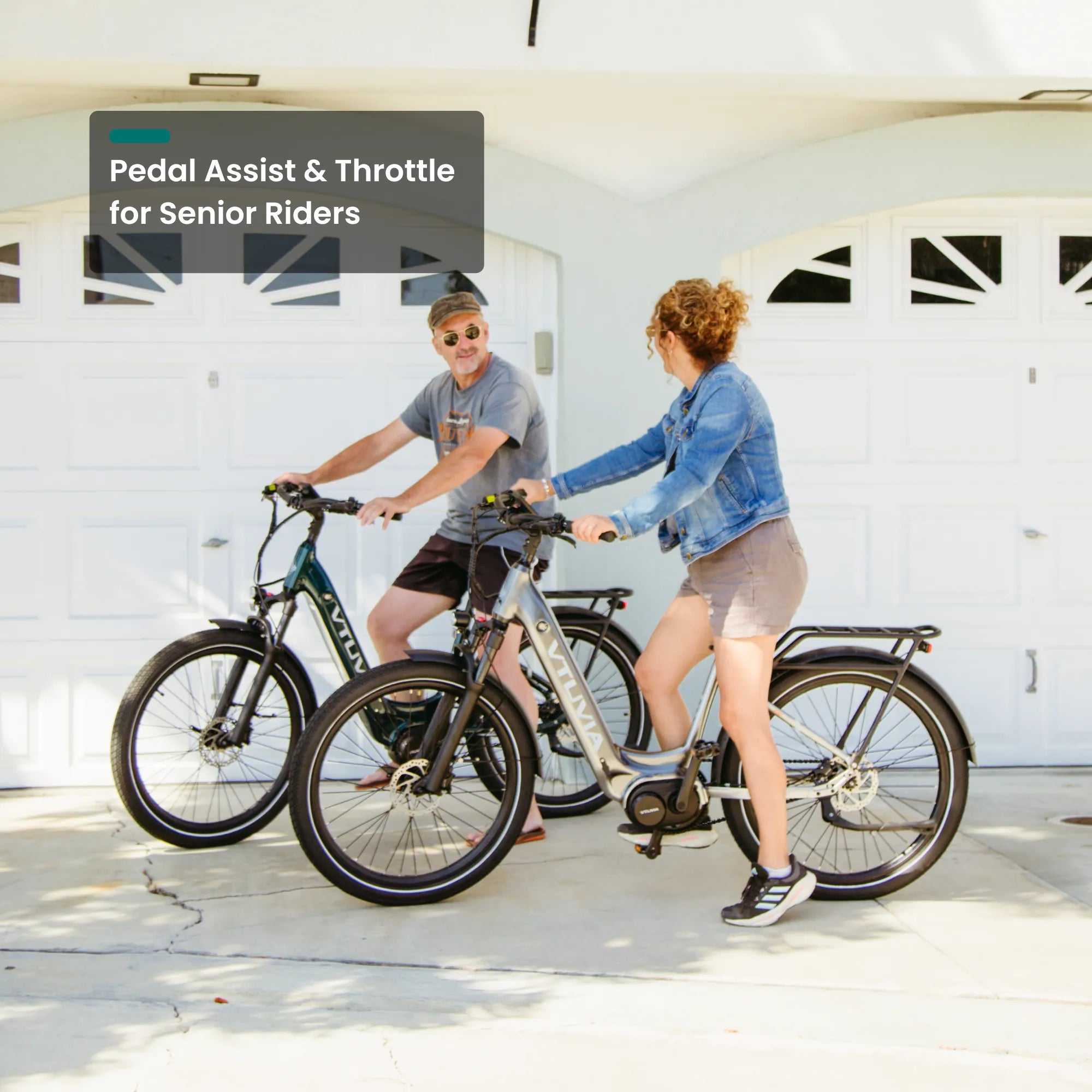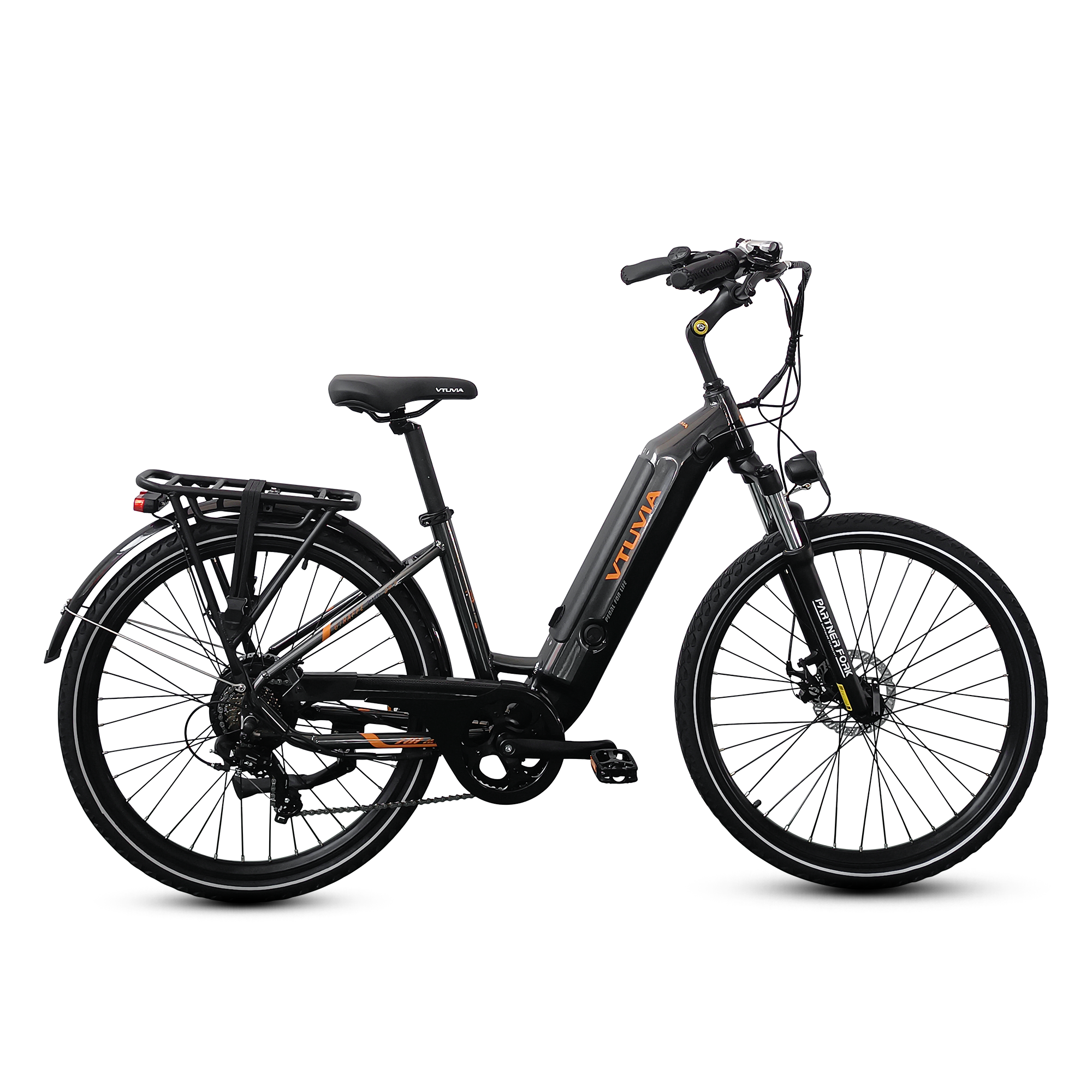How To choose e-bike for me?
Folding Ebikes
Ideal for urban commuters or travelers, VTUVIA folding e-bikes are compact, portable, and easy to store without sacrificing performance. Perfect for those who need an efficient and space-saving option for daily commutes or trips.
Fat Tire Ebikes
Conquer any terrain with VTUVIA fat tire e-bikes. Designed with large, rugged tires, these bikes provide exceptional stability and traction, whether you're navigating rough landscapes or tackling off-road adventures.
City Commuter Ebikes
Designed for urban commuters, VTUVIA city commuter e-bikes offer comfort and efficiency with features like integrated racks, lights, and fenders. Ride with ease through the city while enjoying practical, hassle-free travel.
Ebikes for Seniors
For older adults, VTUVIA ebikes with low-step frames, adjustable seating, and user-friendly controls provide a safe and comfortable riding experience. Designed with ease of use in mind, these bikes ensure enjoyable rides for seniors.
Ebikes for Women
VTUVIA ebikes for women combine ergonomic designs with lighter frames and adjustable components, offering a comfortable and enjoyable ride. Perfect for those who want style and performance in one package.
Ebikes for Men
These e-bikes are built for performance and rugged style. With powerful motors and sporty designs, VTUVIA ebikes for men are perfect for those seeking adventure, speed, and durability on every ride.
Cargo Ebikes
For transporting goods or running errands, VTUVIA cargo e-bikes are equipped with strong frames, spacious racks, and powerful motors. These bikes are perfect for personal or commercial use, offering reliable hauling capabilities.
eMTB Ebikes
VTUVIA eMTB ebikes are made for serious off-roaders. With powerful motors, durable frames, suspension systems, and knobby tires, these bikes are ready to take on rough, challenging terrains and deliver an exhilarating ride.
Hunting Ebikes
Designed with stealth in mind, VTUVIA hunting e-bikes feature quiet motors, camouflage designs, and all-terrain tires. Move through nature with minimal disturbance and reach your destination quietly and efficiently.
Step-Through Ebikes
With low-step frames, VTUVIA step-through e-bikes make it easy to mount and dismount, offering a comfortable and accessible ride for riders of all ages. Ideal for casual rides or urban commuting, these bikes provide convenience without compromise.
Torque Sensor Ebikes
A torque sensor eBike adjusts motor power based on your pedaling force, providing a smoother, more natural, and responsive ride. Perfect for a more intuitive cycling experience.












